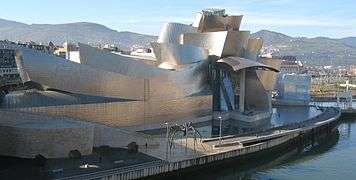City marketing

City marketing (related to city branding) is the promotion of a city, or a district within it, with the aim of encouraging certain activities to take place there.[2] It is used to alter the external perceptions of a city in order to encourage tourism, attract inward migration of residents, or enable business relocation. A significant feature of city marketing is the development of new landmark, or 'flagship', buildings and structures.[3] The development of cities as a marketable product has led to competition between them for inward investment and government funding.[4] It is often manifested in the attempts by cities to attract international sporting events, such as the Olympic Games. Competition between cities exists at the regional, national and international level; and is an effect of globalisation.[5]
Some places are associated with certain brands and build on each other, but sometimes the commercial brand is so powerful that eclipses the place brand.
City marketing can occur strategically or organically. An example of strategic city marketing is Las Vegas.[6] The city is promoted through a variety of efforts with the strategic intent of acquiring cultural and economic bonuses. A case of organic city marketing is Jerusalem.[7] The city is marketed without a grand strategy, as disorganized stakeholders over the course of centuries have glorified the city and encouraged pilgrimage, yielding cultural and economic bonuses. Both cases demonstrate city marketing, each with varying strategic and organic involvement. Generally, organic marketing occurs alongside strategic marketing, as the perception of the city is rather impossible to solely construct with strategic efforts.
According to Scott Cutlip, "one of the first, if not the first, municipal promotion programs" was led by Erastus Brainerd for the city of Seattle beginning in 1896. Seattle was in competition with Portland and Victoria as the preferred city in which to get supplied for the Klondike Gold Rush. A Bureau of Public Information was established within the city’s Chamber of Commerce.[8]
Notes and references
- Notes
- ↑ Monclus & Guardia 2006, p. 203
- ↑ Smyth 1994, p. 2
- ↑ Smyth 1994, p. 3
- ↑ Gordon 1999, p. 1001
- ↑ Gordon 1999, p. 1001
- ↑ Spillman, Benjamin (2009-04-15). "LVCVA: What works here, stays here". Las Vegas Review-Journal. Retrieved 15 April 2009.
- ↑ Metti, Michael Sebastian (2011-06-01). "Jerusalem - the most powerful brand in history". Stockholm University School of Business. Retrieved 1 July 2011.
- ↑ Scott Cutlip (1995) Public Relations History, "Seattle shows the way for cities", pp 166,7
- References
- Gordon, Ian (1999), "Internationalisation and Urban Competition", Urban Studies, 36, doi:10.1080/0042098993321
|chapter=ignored (help) - Philip Kotler, Donald H. Haider, Irving J. Rein (1993) Marketing Places: attracting investment, industry, and tourism to cities, states, and nations, Free Press, ISBN 0-02-917596-8 .
- Smyth, Hedley (1994), Marketing the city: the role of flagship developments in urban regeneration, Taylor & Francis, ISBN 978-0-419-18610-6
- Monclus, Francisco; Guardia, Manuel (2006), Culture, Urbanism and Planning, Ashgate, ISBN 978-0-7546-4623-5